Welcome to the confusing world of header design, where the rules are all blurry and the only thing that works is trial and error. Ask any race car exhaust engineer and they’ll tell you that designing the perfect headers is no less than a dark art.
But luckily for us enthusiasts, aftermarket exhaust manufacturers have already done the hard work and we now have the option of choosing between several different header configurations. The most popular options are 4-1 and 4-2-1 headers.
The 4-2-1 vs 4-1 debate is quite popular for good reason — especially in the single cam community. One gives you a better midrange, and the other gives you a better top-end. But there’s a lot more to it than meets the eye.
In this article, we’ll compare the two header types and throw some light on the inner workings of exhaust headers in general. Let’s dive in.
Exhaust Headers — An Overview
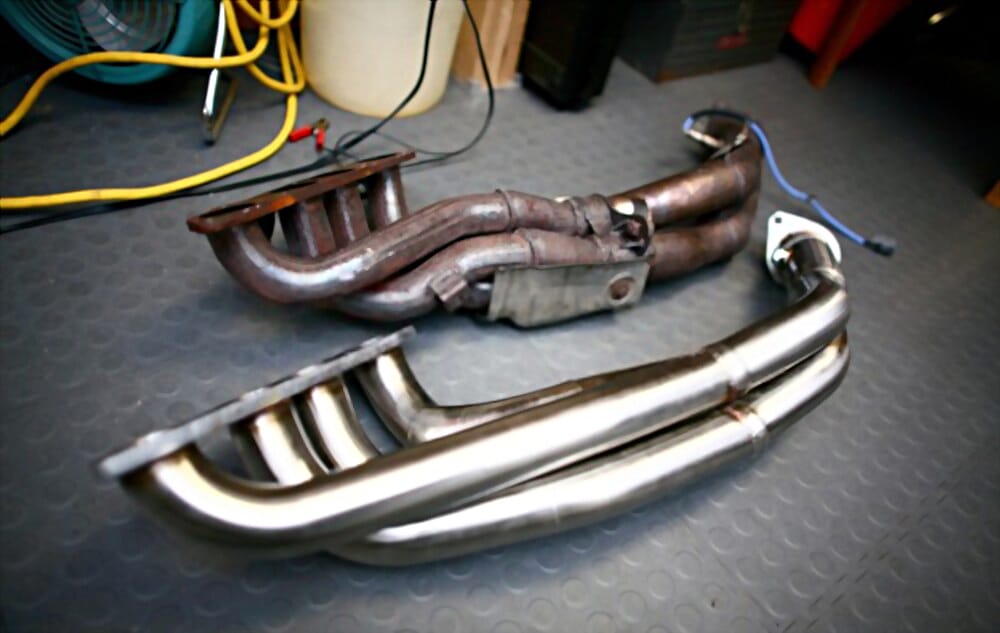
Exhaust headers aren’t just a bunch of random pipes welded together in hopes of directing exhaust flow. When designed correctly, headers not only facilitate the exhaust flow but also help to evacuate the engine cylinders quickly and effectively.
To give you an example of how complex these pipes actually are, here are a few header design variables that impact power output:
- Collector tubing diameter
- Secondary tubing diameter
- Primary pipe length
- Primary pipe merging point
- Secondary pipe length
- Collector shape, and more.
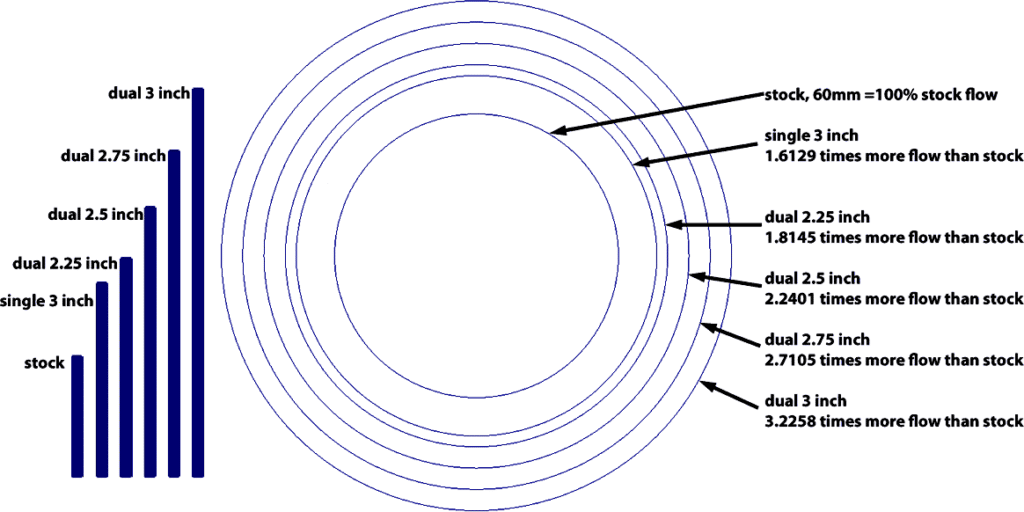
The slightest change in any of these variables can significantly impact the exhaust flow, and power output as a result. Add to that a near-infinite number of engine configurations and it becomes clear why it is next to impossible to build a header that works for all applications.
This is why (among other reasons like emissions and manufacturing costs) automakers stick to exhaust manifolds. For more clarity on the difference between headers and exhaust manifolds, please read our guide on the subject.
So it’s clear that headers are arguably the most influential part of your exhaust system. With that in mind, it’s crucial that you choose the right one for your vehicle.
What you should strive to achieve is a good balance between the exhaust scavenging effect, back pressure, and velocity.
Exhaust Scavenging, Backpressure, and Velocity
To understand why 4-2-1 headers and 4-1 headers do what they do, you need to have a good grasp of the following concepts:
- How an internal combustion engine works, and
- The three most important aspects of how exhaust systems work: scavenging, back pressure and exhaust velocity.
This animated video does an excellent job of illustrating what goes on within your internal combustion engine.
As long as you know where exhaust gases actually come from and why it’s important for them to exit the cylinder, you’ll be able to make sense of exhaust scavenging and back pressure.
Exhaust scavenging refers to the process of replacing waste gases in the engine cylinder. The quicker the spent gases exit, the faster and cleaner your next combustion cycle will be.
Back pressure has more to do with pressure buildup within the exhaust system. This pressure interferes with the outward flow of exhaust fumes. Needless to say, this is a bad thing because it makes the exhaust gases more reluctant to leave the engine cylinder.
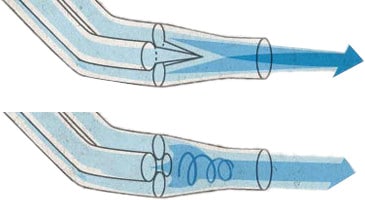
Exhaust velocity refers to the speed with which exhaust gases leave the engine. You want to achieve a balance of all three characteristics to get the most optimal exhaust flow.
Automakers allot massive R&D budgets towards making this happen. By changing your headers, you’re essentially nullifying all the engineering that went into your factory exhaust system.
To make sure you get the most out of your exhaust system upgrade, you need to know exactly what you’re signing up for when you install aftermarket headers. What you do need to be most careful about is tube length and diameter.
4-2-1 or ‘Tri-Y’ Exhaust Headers
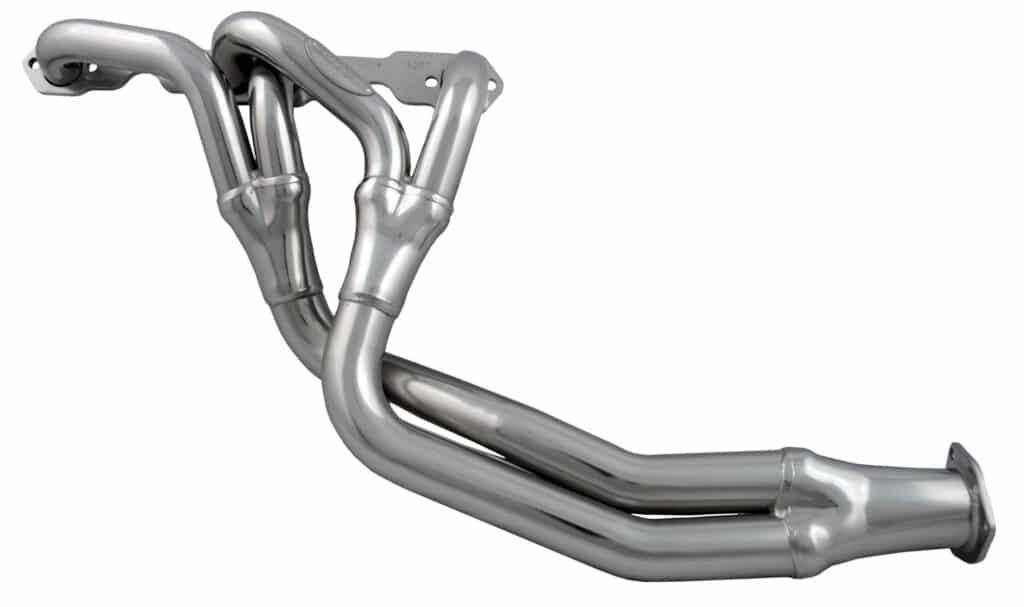
4-2-1 or tri-y headers are called what they’re called because of the way they’re designed, and because of the way they look.
The 4 primary tubes exit the cylinder head and merge to form 2 tubes, and the 2 tubes then merge into a single tube. These tubes eventually connect the collector to form one single unit.
The main benefit of 4-2-1 headers is that they do an excellent job at maintaining flow velocity. The exhaust gases from one tube rushing past the merging point can help scavenge more fumes from the other tube.
Let’s visualize this with the example of a 4 cylinder engine.
Pipes 1 and 4 connect to cylinders 1 and 4, while pipes 2 and 3 connect to cylinders 2 and 3. As the exhaust stroke occurs at different times in each cylinder, the pipes and their junctures are designed to accommodate the varying exhaust pulses without interference.
Because it offers decent mid-range performance, this setup is most commonly seen in production cars. It works best for city driving as low-end torque is what you need.
4-2-1 headers are efficient at removing the exhaust gases when the engine load is relatively low. But, as the load increases, its efficiency decreases, leading to a drop in its top-end performance. The reason why this happens is explained up ahead.
4-1 Exhaust Headers
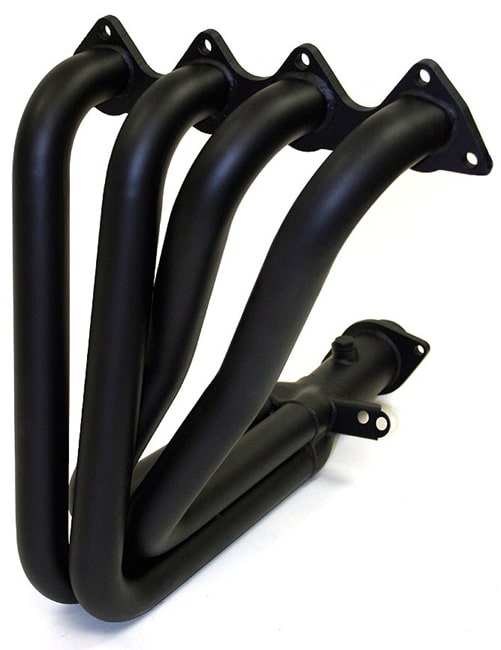
In this setup, the 4 separate primary header tubes directly merge into one. This design skips the step where the 4 pipes merge into 2 first. It is commonly used to improve peak performance closer to the redline.
4-1 headers provide a significant reduction in back pressure due to the separation of exhaust gases into their own individual pipes. Because there are no merging points in this design, the exhaust path remains straight and free of restrictions.
For track use, 4-1 headers are undoubtedly the right choice. It’s no wonder why a vast majority of aftermarket headers utilize this design. The only minor gripe we have with this header design is clearance issues.
4-1 or 4-2-1 Headers — What’s Better?

There isn’t an absolute answer; it depends on what you’re looking for. If you prefer a punchier mid-range for daily driving, 4-2-1 is ideal. But if top-end power for the track is what you’re looking for, 4-1 headers are perfect for you.
Because 4-1 headers have fewer restrictions the exhaust velocity at medium-load remains lower than optimal. This results in slightly weaker scavenging and a weaker mid-range.
In contrast, 4-2-1 headers provide good scavenging characteristics when the load is relatively low. But as the revs climb, the restrictions within them create backpressure.
This results in a weaker top end due to reduced scavenging efficiency. However, there are high-quality 4-2-1 headers that improve the top end as much as they improve the mid-range.
Final Thoughts
What type you should choose really boils down to preferences. If you get more power somewhere in the rev range with a certain header design, you will lose power somewhere else in the powerband — it’s always a trade-off.
When shopping for headers, always make sure to buy from reputable sources that are known for their quality.
What do you think about the tri-y vs 4-1 debate? Let us know in the comments below!


4 comments
Interesting article – many thanks. My issue is whether to go with a $350 set of four into ones or stump up $650 for the more practical TriYs – or just leave the pretty efficient manifold with twin pipe setup the car came with.
Hi, Great article,
I want to build a 4-2-1- manifold for my normally aspirated four cylinder with firing order 1-2-4-3. My question is, which pairs of cylinders should initially be linked together for maximum scavenging low to mid range torque? I have read conflicting views on this question and would like to have the definitive answer.
Thank you for a concise summation of the basics to help readers make a decision. The article was the right amount of theory and practicality.Now I know which header design I’m going to choose.
Great article, but you leave one important thing out. A Try Y header is not exactly the same as a 4-2-1 header. In a try y header (which is what your article actually describes) the secondary pipe is a tuned length (second harmonic usually). A true 4-2-1 header has a very short, if any, secondary pipe. The primary pipes are long like a 4-1 header then they go into a pair of 2-1 merges which in turn immediately go into another larger 2-1 merge. The 4-2-1 header behaves very similar to a 4-1 header with a little advantage in the midrange if the pipes are paired right.